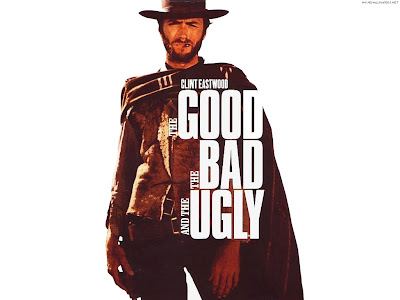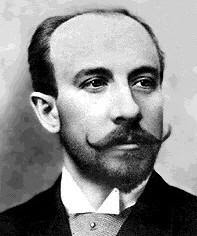
My friend Ray DiPalma mentioned that he was interested in seeing lists of Italian films. I know that Michael Lally is making one at his blog, so I thought I'd do one here. Mine is not an "18 best" or anything like that, although some of them would be on that list, too.
(1)
Cabiria (1914), Giovanni Pastrone
Memorable for its great Temple of Moloch sequence, for its amazing camerawork, lighting and set design, Grand Opera acting, Hannibal crossing the alps, it's just full of goodies. A great silent epic.
(2)
Stromboli (1949), Roberto Rossellini
Ingrid Berman as a Lithuanian WW2 refugee who marries an Italian soldier and goes to live in the town of Stromboli on an almost deserted island with an active volcano. It's kind of a spiritual quest set amid peasant life and ideological struggles. Bergman gives an unforgettable performance.
Ray, back in the day
photograph by Jos C Brilliantes

(3)
La Donna del fiume / Woman of the River (1955), Mario Soldati
This was no masterpiece, but a workmanlike melodrama, imitating
Bitter Rice with Silvana Mangano from six years earlier, both films featuring gorgeous peasant women working in water. This one caused a hormonal stampede in my 14 year old ecosystem, from which I never truly recovered.

(4)
La Romana / Woman of Rome (1955), Luigi Zampa
Saw this back then, too, and don't remember it that well, but I remember Gina Lollobrigida being really good in the title role, as Adriana, a young woman who loses in love and then gets involved in prostitution. It was based on the novel by Alberto Moravia.
(5)
Un maledetto imbroglio / The Facts of Murder (1959), Pietro Germi
Another movie I don't remember well, but I do remember its effect. It was very powerful, grotesque, funny, and extremely well directed, although maybe it was the editing as much as the direction that was so good. All about crime and the Roman proletariat, with Germi in the lead, and Claudia Cardinale in one of her earlier roles.
(6)
La Notte / The Night (1962), Michelangelo Antonioni
Boredom and lust in the impersonal ambience of modern Rome. A very, very slow film, which I totally loved. Jeanne Moreau and Marcello Mastroianni are perfect. Antonioni is a poet.
(7)
Ieri, oggi, domani / Yesterday, Today and Tomorrow (1964), Vittorio de Sica
A sex comedy with Mastroianni and Loren having a lot of fun in three segments.
(8)
L'ape regina / Queen Bee (1963), Marco Ferreri
As one IMDB reviewer put it,
"Also the sonorous column did not escape to the attention of the censori. The scene of the carretto that it transports the rests of emains, was in origin commented from a “music too much similar to the boneses noise that dance, too much tintinnante” and, therefore, the cancellation was decided some." This is another one I don't remember well, but remember liking well. I went looking for memory help at the IMDB and found this crazy stuff.
Queen Bee is another sex comedy.
(9)
The Good, the Bad & the Ugly / Il Buono, il brutto, il cattivo (1966), Sergio Leone
What can I say. This whole list could havc been Spaghetti Westerns. Here we have Clint at his Clintiest, and Leone and Morricone are just insane. Icons magnified beyond belief. It's mocking and elegaic at the same time.

(10)
Teorema / Theorem (1968), Pier Paolo Pasolini
Famous for its extremely spare dialogue,
Teorema has Terence Stamp and a stranger who seduces an entire wealthy Italian household, from the maid all the way up the hierarchy to the father. Lots of slow panning shots across the landscape in between boinks. I saw Terence Stamp once on a deserted street in London. I saw those eyes, man. He could seduce an entire species.
(11)
Once Upon a Time in the West / C'era una volta il West (1968), Sergio Leone
Leone's masterpiece is stately, and detailed to the point of absurd exaggeration, but it never lets up. It's an ode to Westerns, a film in love with icons, with landscape, with ambiance, and with feeling.
(12)
Investigation of a Citizen Above Suspicion / Indagine su un cittadino al di sopra di ogni sospetto (1970), Elio Petri
Gian Maria Volonté as a fascist cop. Amazing film. Corruption abounds. A deeply sarcastic, grim, political satire, a riveting, byzantine drama, a black comedy, and more Morricone.
(13)
Love and Anarchy / Film d'amore e d'anarchia, ovvero 'stamattina alle 10 in via dei Fiori nella nota casa di tolleranza... (1973), Lina Wertmüller
This is my favorite Lina Wertmüller film, made at a time when she was just doing it, as they say. Giancarlo Giannini is a dumbass anarchist who sets out to assassinate
Il Duce. Mariangela Melato is the prostitute whom he loves. Violent and chaotic, the story just grabs you where you live, and drags you into a wild conflict between love and social justice.
(14)
Il Portiere di notte / The Night Porter (1974), Liliana Cavani
Dirk Bogarde and Charlotte Rambling in an erotic psychodrama, set in Vienna during the Nazi era. Bogarde is remarkable, his performance constructed through facial expression and body language, much more than the delivery of dialogue. A brilliantly painful film.
(15)
L'Innocente / The Innocent (1976), Luchino Visconti
This was not Visconti's masterpiece. That would be
The Leopard. L'Innocente was his last film, with Giancarlo Giannini as an upperclass brute fucking Jennifer O'Neill while married to Laura Antonelli. It's a brutal, serious sex comedy, sans comedy, but with lots of exquisite detail. I remember the camera carsessing Antonelli's clothes like a fetishist in love.
(16)
Cristo si è fermato a Eboli / Christ Stopped at Eboli (1979), Francesco Rosi
Gian Maria Volonté again, this time as Carlo Levi in a film that contemplates philosophical issues in the context of peasant life during the Fascist rule in Italy. A nice piece of late neorealism.
(17)
Il Postino / The Postman (1994), Michael Radford.
Yes, an Italian film directed by an Englishman. Its lead actor, Massimo Troisi died twelve hours after shooting ended. He had a heart condition, but didn't want to interrupt the filming because he believed so strongly in the project.
Il Postino is insistently naïve and unabashedly sentimental. Philippe Noiret's Pablo Neruda is totally charming. Troisi is a heartbreaker.
(18)
Malèna (2000), Giuseppe Tornatore
Monica Belucci is the object of desire in this symbolic story of a woman alone, struggling to survive in a small town at the end of WW2, while her husband is at war, and presumably lost. She suffers endless degradation, worshipped all the while by a young boy who follows her everywhere.
These are my Italian films.
Ciao.

rubber stamp work by Ray DiPalma
 An Injury To One
An Injury To One 






























